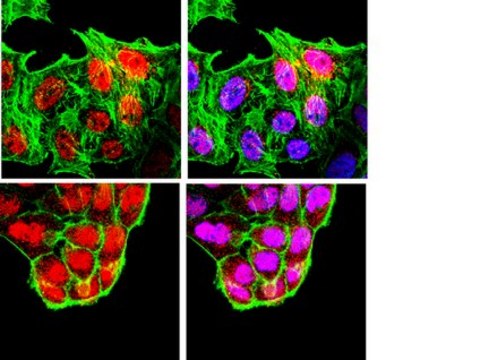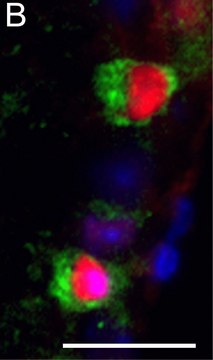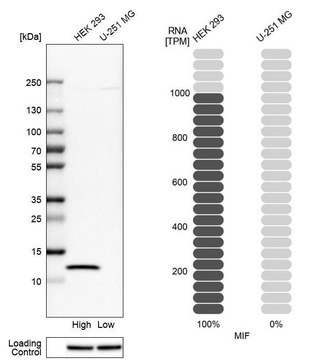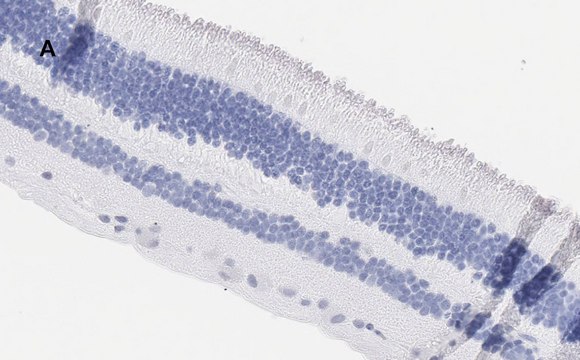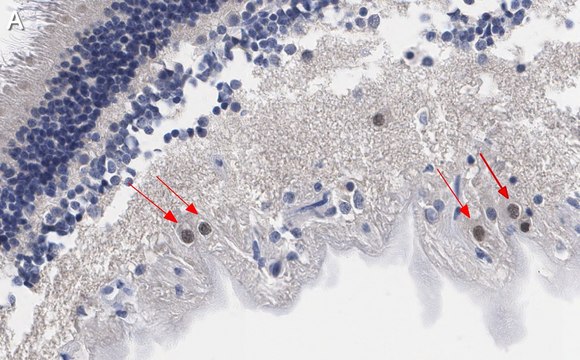B9684
Anti-Brn3a antibody produced in rabbit
affinity isolated antibody, buffered aqueous solution
Synonym(s):
Brn3A Antibody, Brn3A Antibody - Anti-Brn3a antibody produced in rabbit, Anti-FLJ13449, Anti-OCT-T1, Anti-POU4F1, Anti-RDC1
About This Item
Recommended Products
biological source
rabbit
Quality Level
conjugate
unconjugated
antibody form
affinity isolated antibody
antibody product type
primary antibodies
clone
polyclonal
form
buffered aqueous solution
mol wt
antigen 42.9 kDa
species reactivity
human
species reactivity (predicted by homology)
mouse
technique(s)
immunocytochemistry: 1:200-1:1000
immunohistochemistry (frozen sections): 1:200-1:1000
western blot: 1:200-1:1000
UniProt accession no.
shipped in
wet ice
storage temp.
−20°C
Gene Information
human ... POU4F1(5457)
mouse ... Pou4f1(18996)
rat ... Pou4f1(114503)
General description
Immunogen
Epitope
aa141-157
Physical form
Disclaimer
Not finding the right product?
Try our Product Selector Tool.
recommended
Storage Class Code
12 - Non Combustible Liquids
WGK
WGK 2
Flash Point(F)
Not applicable
Flash Point(C)
Not applicable
Regulatory Information
Choose from one of the most recent versions:
Already Own This Product?
Find documentation for the products that you have recently purchased in the Document Library.
Our team of scientists has experience in all areas of research including Life Science, Material Science, Chemical Synthesis, Chromatography, Analytical and many others.
Contact Technical Service